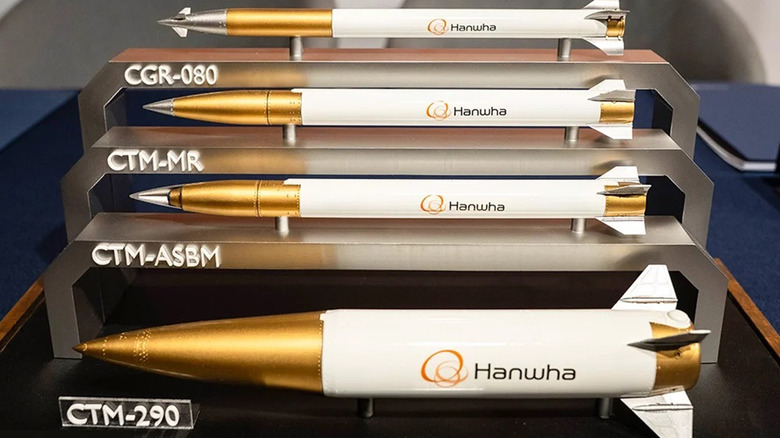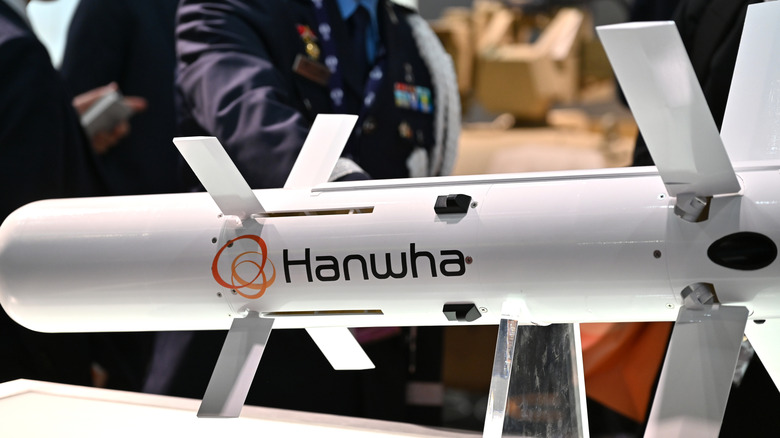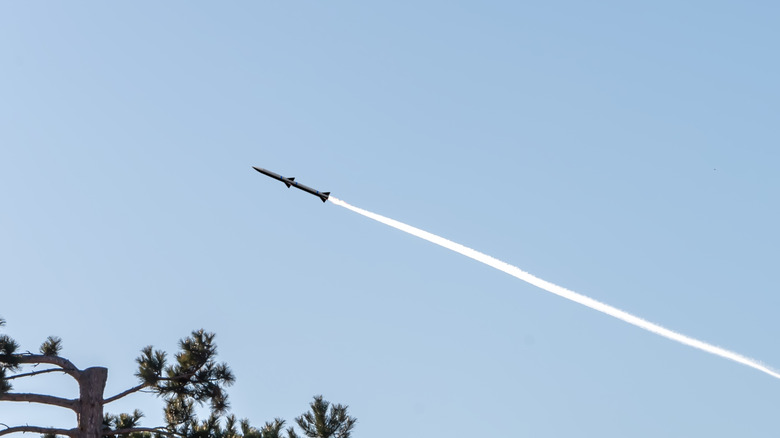Hanwha's Deep Strike Missile System To Get Anti-Jamming GPS Upgrade For NATO
The technology of war never stands still, and each conflict provides hard-won lessons in where the current generation of weaponry worked — and where it didn't. One of the main lessons being learned in the ongoing war in Ukraine is the susceptibility of current smart weapons to the effects of GPS-jamming and other electronic jamming. In the case of one weapon, the Ground-Launched Small Diameter Bomb, it's been reported that the weapon performed so badly that the Ukrainians rarely use it.
This vulnerability has seen Hanwha Aerospace join forces with BAE Systems. Hanwha, a South Korean company, is to integrate BAE Systems' next-generation, anti-jamming GPS technology into its Deep Strike Capability weapons system. The Deep Strike Capability system is a versatile system capable of launching a range of missiles depending on mission requirements. It also has the capability to work in single or dual-launcher configurations.
The partnership with BAE is expected to enhance the weapon's precision and reliability, even when operating in highly contested "electronic environments." The system is also being engineered to ensure it meets NATO's interoperability requirements. From a military perspective, this ensures that the system integrates seamlessly with Western command and control networks.
It's also a move that's intended to make the weapon more appealing to European and other allied nations. Poland has already purchased over 200 Homar-K variants of the weapon and has signed an agreement with Hanwha to manufacture missiles in Poland. Let's have a closer look at the missile system and the upgrade making it "NATO-friendly."
Inside the anti-jamming GPS upgrade
The partnership between Hanwha and BAE aims to add the British company's next-generation anti-jamming GPS technology to the weapons platform. The BAE system is designed to keep guided weapons on course even through a "blizzard" of electronic warfare interference. As the ongoing Ukrainian war proves, such technology is critical if precision-guided weapons are to remain just that — precise. In some instances, the use of electronic warfare measures has reduced the accuracy of weapons from an expected 20 meters to over a kilometer.
BAE's advanced countermeasures aim to cut through the "chaff" and maintain accuracy even in areas that are considered highly contested, at least in an electronic warfare sense. The Integrated GPS anti-jam system (IGAS) uses a "12-beam steering" system that allows it to simultaneously apply its anti-jamming technology across all satellite connections. It's also a compact device that weighs in at a maximum of two pounds. Of course, IGAS also needs to be robust enough to withstand the rigors of rocket launches and high-G conditions. To this end, IGAS is designed to withstand forces of up to 150 g and operate in a temperature range of -65.2 to 165 degrees Fahrenheit.
The current 24-channel system is an evolution of BAE's 12-channel NavStrike and Joint Direct Attack Munitions receivers. Ultimately, the goal of the project is to allow precision weapons to reclaim that 20-meter accuracy and maintain consistent, reliable, and accurate targeting performance even in GPS-denied or heavily contested combat zones.
Boosting NATO interoperability
By opting for the BAE IGAS system, Hanwha has ensured that the weapon can operate as part of NATO's increasingly networked battlefield systems. However, NATO's interoperability doctrine goes beyond military hardware and includes such basic factors as allies being able to work together, share resources, and adapt common procedures. In hardware terms, NATO defines interoperability not as the use of common weapons, but as systems that, "share common facilities and are able to interact, connect and communicate, exchange data and services with other equipment."
In practical terms, this means that Hanwha's Deep Strike Capability aims to be a NATO "plug and play" weapon. It can be deployed alongside existing NATO assets and integrate seamlessly with shared command and control assets. Speaking about the integration of the system into the weapons package, Billy Boo-hwan Lee, head of Precision Guided Munitions at Hanwha, said, "The purpose of this cooperation with BAE Systems is to secure advanced electronic warfare protection technology to protect our guided weapon systems."
The growing importance of such devices is also ably demonstrated by the US Army's decision to retrofit anti-GPS jammers in its artillery systems and the increasing use of fiber-optic drones immune to electronic jamming. Both of which are demonstrations of how real combat situations shape the evolution of weapons systems.
Ultimately, with NATO interoperability, it's also representative of the move to an increasingly connected battlefield.


